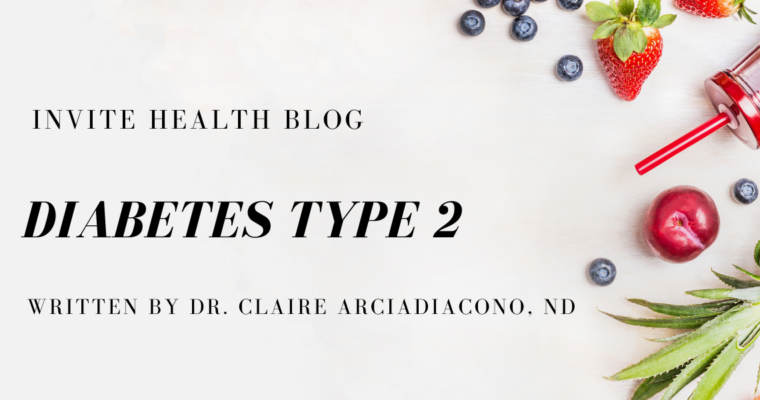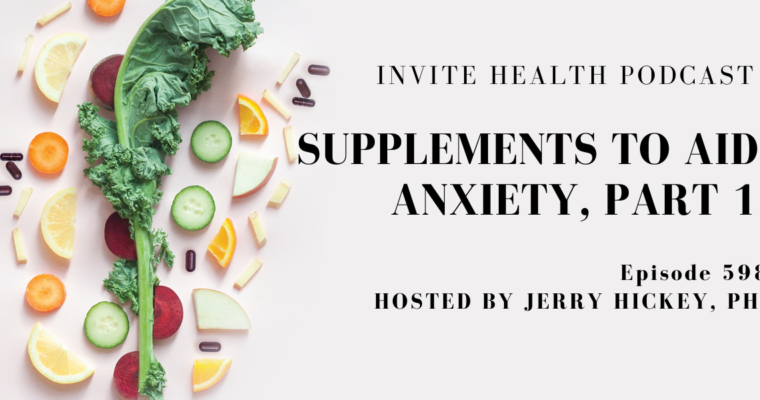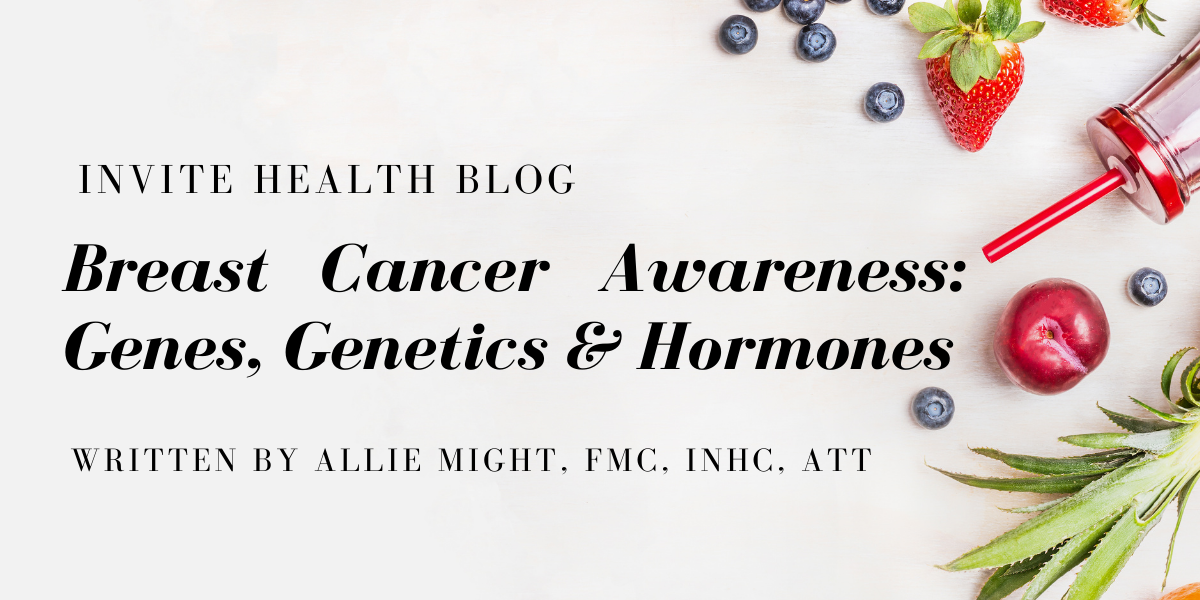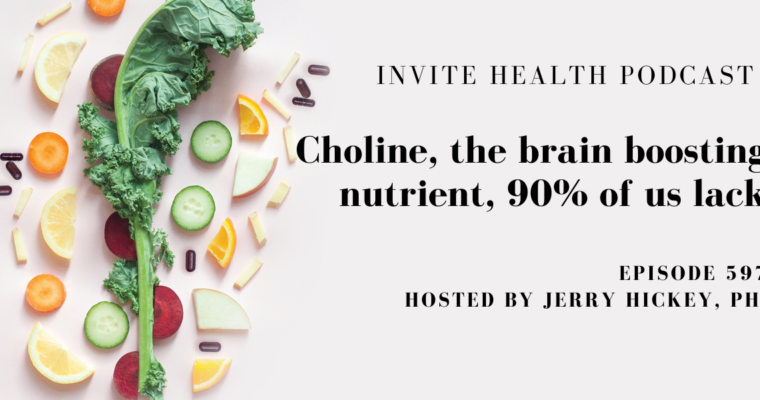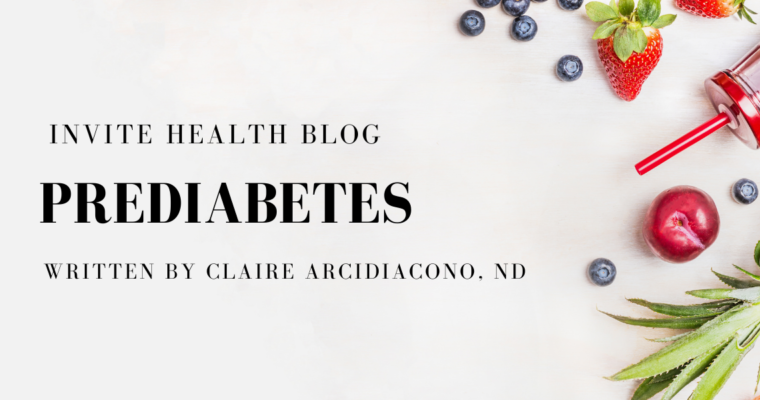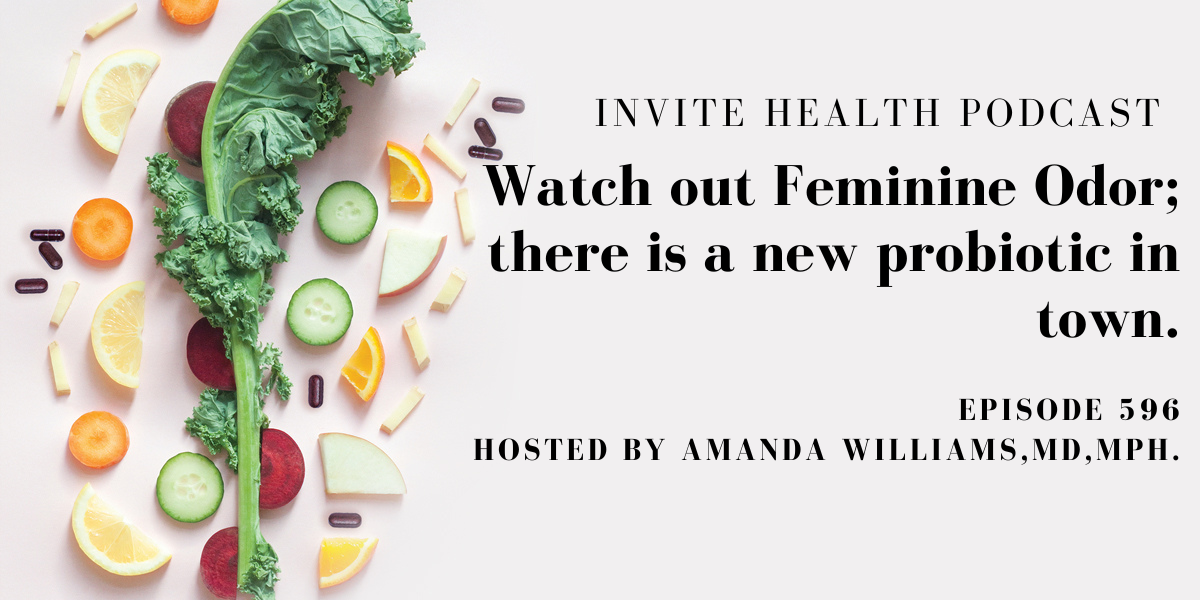Subscribe Today!
Please see below for a complete transcript of this episode.
WATCH OUT FEMININE ODOR; THERE’S A NEW PROBIOTIC IN TOWN, INVITE HEALTH PODCAST, EPISODE 596
Hosted by Amanda Williams, MD, MPH.

*Intro Music*
InViteⓇ Health Podcast Intro: [00:00:04] Welcome to the InViteⓇ Health Podcast where our degreed health care professionals are excited to offer you the most important health and wellness information you need to make informed choices about your health. You can learn more about the products discussed in each of these episodes and all that InVite Health has to offer, at www.invitehealth.com/podcast. First time customers can use promo code podcast at checkout, for an additional 15% off your first purchase. Let’s get started.† [00:00:34]
*Intro Music*
Amanda Williams MD, MPH: [00:00:40] Well, ladies, it’s time that we talk about the dreaded yeast infection. I know it’s a topic that nobody wants to discuss, but it’s pretty darn common, so I think we need to address it, or is it a yeast infection at all? Hmm. This is something that I am going to speak about today because it’s so common and so many women deal with this. So I’m going to talk about the statistics and talk about the difference between what a yeast infection is and what bacterial vaginosis is and what we can be doing when it comes to diet, and of course, what supplements can be beneficial when it comes to addressing this imbalance in the vaginal flora. So I am scientific director, Dr. Amanda Williams. And let’s get right to it. Let’s talk about the things that nobody wants to talk about. But we need to, and it shouldn’t be something that we shy away from. Because when you look at yeast infections, men can get yeast infections too. But we know that this is a lot more common in women. And roughly 75 out of 100 women in this country will experience at least one yeast infection at some point in their life. Now, unfortunately, many women get chronic yeast infections and you have to try and look and say, okay, well, what is creating this? You know, could it be that there are other factors going on? Have you been on antibiotic treatment for a respiratory infection, for example? You know, are you on some type of hormone therapy? Do you have to take steroids for something? There are different things that can definitely increase the risk for developing a yeast infection.† [00:02:24]
CANDIDA ALBICANS VS BACTERIAL VAGINOSIS
[00:02:25] Of course, you can look at, you know, clothing and they always say tight clothes. This can create this issue because non breathable clothing has been linked to the development of yeast infections. But nonetheless, we know it’s very common. Many women who experience their first yeast infection, it’s usually after they’ve been on an antibiotic for a completely unrelated issue. And the next thing you know is you’re dealing with this Candida overgrowth. So we know that Candida is, you know, naturally occurring. So you have Candida Albicans, this is naturally occurring. The problem is, is that when you get too much of something, it’s not always a good thing. And we certainly see this to be the case when it comes to vaginal yeast infections. Now we have to differentiate that with bacterial vaginosis. Bacterial vaginosis is also incredibly prevalent, and we know that this is roughly somewhere around 30% of women and especially in women of reproductive ages. So this is a very common thing that we will see women who have bacterial vaginosis. What’s interesting is that many women who have BV as they shorten it to, don’t even have any symptoms. And so this is, can lead to issues because now you have this chronic infection and this chronic inflammation. Now, when B.V. does rear its nasty head, this is where you can really see the difference between a yeast infection or if it’s BV. So yeast infection, we know you get this, you know, thicker white discharge. Oftentimes people describe it as like cottage cheese. I know it’s gross, but we have to face the reality of what it is. But what’s interesting is that this should not have any type of an odor to it. This can create a lot of discomfort when you’re urinating or during sexual intercourse. So pain and discomfort very common with yeast infections and a lot of irritation or itching can also occur.† [00:04:30]
ICYMI: CONTROLLING CANDIDA – INVITE HEALTH PODCAST, EPISODE 432>>LISTEN NOW!
[00:04:31] Now, bacterial vaginosis, on the other hand, this is much different. The bacteria creates a significant amount of inflammation, a lot of discomfort, a lot of burning, especially when you’re going to the bathroom. And this is what many women describe as a fishy odor. So if you have a fishy odor, we have to not think yeast infection. We have to think bacterial vaginosis. This is really important because many women, they think if they have, you know, this kind of unfriendly odor, that it’s because of yeast. And this is not the case. We can certainly look at bacterial vaginosis as being the predominant player in that. The main bacteria that normally exists and the normal healthy vaginal flora is lactobacillus. What we know is that when our lactobacillus gets overrun and we get this imbalance within our microorganism or that microbiome within the vagina, this is when the issues can arise and the development of bacterial vaginosis can occur. So we want to keep these things in mind. Yeast infection, non odor generally brought on because of an underlying health issue, maybe diabetes, pre-diabetes taking an antibiotic, for example, bacterial vaginosis, incredibly common. And this is what leads to that. Not so nice smell.† [00:06:07]
DIET & PROBIOTICS FOR VAGINAL HEALTH
[00:06:08] What can we do? Well, clearly, we know that our diet makes a big difference, because whether we’re dealing with bacterial vaginosis or we’re dealing with a yeast infection, do not give that bacteria or that yeast things to thrive on such as sugar. So we really have to pay attention to the foods that we are eating. We want to adhere to a mediterranean diet where you’re getting powerful, high antioxidant foods coming from your fruits and vegetables. You don’t want to be snacking on bad foods. You want to be incorporating in things like seeds and nuts. So that Mediterranean diet will help with that microbial environment. This is very key. And then since we know that the predominant type of bacteria found within the vaginal tract is that of lactobacillus, then it would make sense that we would want to use a supplement that contains lactobacillus, which is what the probiotic women contains. This is a really fabulous formulation that has four different strains of lactobacillus. Why did I formulate this product that way? Because we just look at the science. We know that the normal vaginal flora is made up of lactobacillus. When that lactobacillus gets overrun by either Candida or B.V., we have to root out the bad stuff with more good stuff. So this has a combination of Lactobacillus reuteri, Lactobacillus rhamnosus, Lactobacillus acidophilus, and Lactobacillus paracasei, why do all of these for matter so much? Because we can go right to the science and we can look and we can see how lactobacillus can be so incredibly beneficial when it comes to oral supplementation.† [00:07:55]
[00:07:56] So in the frontiers of microbiology, they looked at lactobacillus paracasei being incredibly suitable for oral administration. So taking a supplement of lactobacillus paracasei, and they found that when women were taking this particular strain of lactobacillus, it helped to create this balance once again within the vaginal microbiome. So hence, we fast forward and we say, okay, well then that is why we have the lactobacillus paracasei in this. Then you look at the Lactobacillus rhamnosus, and the Lactobacillus acidophilus. Clearly, we know that being that the human vagina is colonized by a variety of microbes, lactobacilli being the most common that we want to flood the system with healthy lactobacilli. And in the International Journal of Immunopathology, they looked at the effect of supplementation of the Lactobacillus rhamnosus, with Lactobacillus acidophilus, and they found indeed that when women were utilizing this probiotic combination, it resulted in much more normalization of the vaginal microbial environment. This is key. We want to chase out the bad things and recolonize with the good. So that would be great if the probiotic for women just had these four strains of lactobacillus. But I wanted to make it incredibly powerful, which is why there is the addition of garlic extract as well as thyme. So we start thinking about, you know, different herbs.† [00:09:41]
THERAPEUTIC EFFECTS OF GARLIC & THYME FOR VAGINAL HEALTH
[00:09:42] Why garlic and thyme? Well, we can go to the science once again and we can look at the therapeutic effects of garlic extract. And they compared this to oral metronidazole. This is the most commonly prescribed thing that women will take if they have bacterial vaginosis. Their doctor will give them a prescription for metronidazole, which can then lead to a yeast infection. So looking at garlic extract versus metronidazole, and this was a randomized controlled trial, targeting women who had active BV infection, so bacterial vaginosis. And they found that the garlic could be a suitable alternative. Instead of using metronidazole, they could actually just give the women, garlic extract in the treatment of bacterial vaginosis. Why would they want to look at this? Because we know that many women who take metronidazole, end up with a plethora of different side effects. You know, maybe it’s GI issues, maybe it’s a yeast infection, maybe they end up just overall not feeling good being on that medication. But yeah, when they gave them garlic extract, it got rid of the bacterial vaginosis infection and they didn’t have to deal with those side effects. So hence this is why we have the garlic extract in the Probiotic for women.† [00:11:02]
ICYMI:SEXUAL DYSFUNCTION, PART 1 – INVITE HEALTH PODCAST, EPISODE 504>>LISTEN NOW!
[00:11:03] Then we look and say, well, how about thyme? The science on thyme is very impressive. Once again, I pulled a study out of the Journal of Applied Microbiology that was talking about the alternative treatment of vaginal infections with the use of thyme. So looking at women who were dealing with either bacterial vaginosis or dealing with Candida infections or yeast infection or some of the women had both. So they had the double whammy effect. And they found that when they supplemented these women, who are dealing with these current conditions, that they did really well on the thyme extract and they concluded the support for the safety and efficacy of utilizing thyme extract to target E.coli, to target staph and to target Candida Albicans overgrowth. So an alternative treatment once again. So we have this new formulation, the probiotic for women, which is going to create this balance once again with the power of those four different lactobacillus strains. And then it’s enhanced with that garlic and that thyme extract to really zero in, on the many issues that women have concerns with.† [00:12:27]
CONCLUSION
[00:12:27] And yes, ladies, we need to talk about these things because they’re very common. But now that you know that there’s this wonderful formulation that you can utilize to create this balance once again and re-establish a normal microbial environment, you know where to go. You can go to Invite Health. You can get the Probiotic for Women. You can certainly talk to one of our nutritional experts, and they can guide you on how you should use this formulation, when you should use this formulation, and how often you should be taking this particular product. And that is all that I have for you for today. I want to thank you so much for tuning in to the InViteⓇ Health Podcast. Remember, you can listen to podcasts by visiting invitehealth.com or wherever you listen to your podcast, make sure that you subscribe and you leave us a review. You can follow us on Facebook, Twitter and Instagram, and we will see you next time for another episode of the InViteⓇ Health Podcast†[00:12:27]


